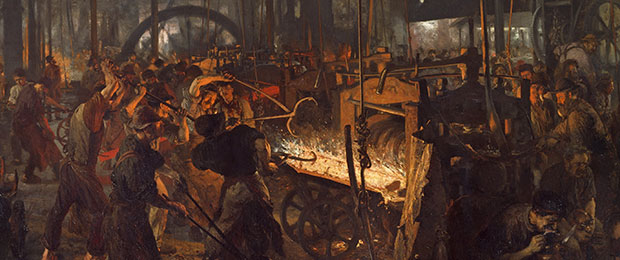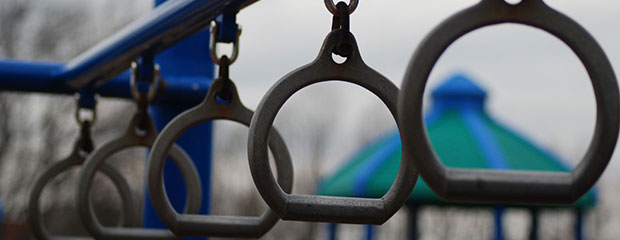"solidpodcast" entries

Quentin Hardy on Facebook’s drones
The O’Reilly Solid Podcast: The New York Times' deputy technology editor talks about technology, people, and power.
Subscribe to the O’Reilly Solid Podcast for insight and analysis about the Internet of Things and the worlds of hardware, software, and manufacturing.
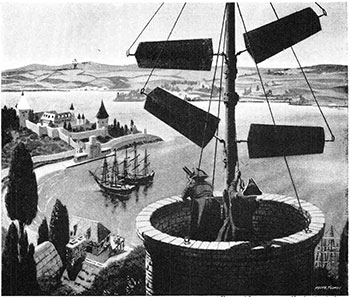 In our new episode of the Solid Podcast, David Cranor and I talk with New York Times deputy technology editor Quentin Hardy. Hardy recorded with us just after visiting Facebook’s Aquila drone project, which promises to extend Internet access to remote parts of the globe — and to advance a slew of aerospace and communication technologies through open sourcing.
In our new episode of the Solid Podcast, David Cranor and I talk with New York Times deputy technology editor Quentin Hardy. Hardy recorded with us just after visiting Facebook’s Aquila drone project, which promises to extend Internet access to remote parts of the globe — and to advance a slew of aerospace and communication technologies through open sourcing.
Projects like Aquila can challenge traditional government, but have their own tendency to create new mechanisms for control. “What’s clear is that existing systems of power will morph or collapse in decades to come because of these new technologies,” Hardy says, noting the contradiction that, in today’s world, “people have never been more empowered, and they’ve never been so controlled and repressed.”
We also talk about what’s happening in Shenzhen, China (which has been called “China’s Silicon Valley”), and the hardware hub’s dynamic mix of entrepreneurship, knockoffs, and innovation. Read more…

Brady Forrest and Renee DiResta on advising hardware startups
The O’Reilly Solid Podcast: Hardware startup success stories, pitfalls, and best practices.
Subscribe to the O’Reilly Solid Podcast for insight and analysis about the Internet of Things and the worlds of hardware, software, and manufacturing.
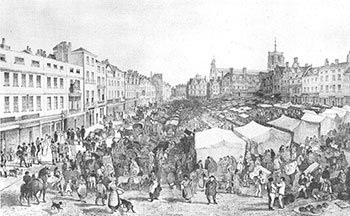 Hardware startups are starting to look like software startups: a lean company can bring a reasonably simple piece of consumer electronics to market for a few hundred thousand dollars.
Hardware startups are starting to look like software startups: a lean company can bring a reasonably simple piece of consumer electronics to market for a few hundred thousand dollars.
Behind that low figure are technological advances (like 3D printing and CNC machining that make prototyping faster and easier) as well as organizational advances — in particular, hardware incubators and accelerators that offer funding and help founders work their way through the product development process.
In our new episode of the Solid Podcast, David Cranor and I talk with Renee DiResta and Brady Forrest, co-authors (along with Ryan Vineyard) of The Hardware Startup: Building Your Product, Business and Brand. DiResta is vice president of business development at Haven, a marketplace for ocean freight shipping, and Forrest runs Highway1, a leading hardware incubator.
Forrest and DiResta take us into the trenches on a wide range of topics, including design for manufacture (DFM), idea validation, crowdfunding, cost control, marketing, packaging, and shipping. It’s a quick tour of the tricky areas of expertise that hardware founders need to develop. Read more…

Ben Einstein on accelerating hardware startups
The O’Reilly Solid Podcast: A discussion about critical issues for hardware startups.
Subscribe to the O’Reilly Solid Podcast for insight and analysis about the Internet of Things and the worlds of hardware, software, and manufacturing.
Hardware is getting more accessible, which makes hardware startups more appealing. A small team can develop a viable prototype for a simple product on a few hundred thousand dollars, and even tricky problems like autonomous cars are within the reach of startups.
Incubators and accelerators like Highway1, Lemnos, and HAX have played an important role in making hardware accessible; they help their portfolio companies work through the tricky engineering, manufacturing, and marketing problems that software startups don’t have to deal with.
In our new episode of the Solid Podcast, David Cranor and I have a wide-ranging discussion with Ben Einstein, co-founder and managing director of Bolt, one of the leading hardware startup accelerators.
Einstein, who spoke at Solid 2015 in California, talks about the importance of hardware marketing and customer development, including branding, crowdfunding, and virality (which is “much more possible with hardware now than it was 10 years ago,” he says). Read more…

Tying software and hardware together through art
The O'Reilly Solid Podcast: Andy Cavatorta and Jamie Zigelbaum on art that combines physical and digital.
One of the theses behind our Solid Conference is that the stacks — the ranges of knowledge that technologists need to understand — are expanding so that the formerly separate disciplines of hardware and software are merging. Specific expertise is still critical, but the future lies in systems that integrate physical and virtual, and developing those effectively requires the ability to understand both sides at some basic level.
Installation art is a great place to look for those seamless integrations, and we’re excited to feature a couple of interesting installations at Solid. Our latest episode of the Solid Podcast takes us to Flatbush Avenue in Brooklyn, home to a collective of designers and engineers called Dark Matter Manufacturing, where David Cranor and I spoke with Andy Cavatorta and Jamie Zigelbaum. Cavatorta and Zigelbaum both create installations; Cavatorta works with sound and robotics, and Zigelbaum’s projects explore communication and interaction.
Cavatorta’s Dervishes installation will appear at O’Reilly Solid, June 23-25. He will also speak on “Music, machines, and meaning: What art teaches us about robotics and networks.” Read more…

Cottage industry 2.0
The O'Reilly Solid Podcast: Amanda Peyton of Etsy on the rise of craft.
Our new episode of the Solid Podcast brings us to Etsy, where David and I spoke with Amanda Peyton, a serial entrepreneur and product manager at Etsy, about the company’s role as a macro-community of micro-communities.
The connection between Etsy and Solid might not be obvious at first. Etsy’s specialty is the ultra-analog: handmade crafts that represent a return to an earlier era of artisan design and manufacturing.
But Etsy is emblematic of how Web platforms have transformed the relationship between product creators and product consumers. It offers rapid feedback from the market, quick discovery of new trends, and access to a large and diverse enough customer base that even extraordinarily niche products can be viable.
The result is a community of distributed manufacturers that’s responsive and efficient. For goods that can be made without a large, well-capitalized factory (even some electronics now fall into this category), Etsy may be the future of manufacturing. Read more…

The challenge of connecting anything to the Internet
The O'Reilly Solid Podcast: Zach Supalla and Will Hart on building a supply chain, making radios work, and taking on big telecom.
Subscribe to the O’Reilly Solid podcast to stay on top of topics related to the Internet of Things, hardware, software, manufacturing, and the blurring of the physical and virtual worlds.
A few weeks ago, hours after launching a blow-out Kickstarter campaign, Zach Supalla and Will Hart of Spark Labs dropped by our podcasting studio to have a wide-ranging conversation about how they’d built a successful hardware startup, how they manage their overseas supply chain, and how they’re taking on established machine-to-machine and telecom companies by turning themselves into a mobile virtual network operator (MVNO).
Zach and Will are leading a workshop at our Solid Conference called “How to manage China” on how to build and maintain a supply chain.
Spark’s latest product, the Electron, is a tiny development kit that can connect just about any kind of device to Spark’s back-end platform over a 3G cellular signal for as little as $3 per month. Read more…

Rebooting a 1970s satellite with modern software and hardware
The O'Reilly Solid Podcast: Dennis Wingo on reestablishing contact with a satellite that had been silent for 17 years.
Subscribe to the O’Reilly Solid podcast to stay on top of topics related to the Internet of Things, hardware, software, manufacturing, and the blurring of the physical and virtual worlds.
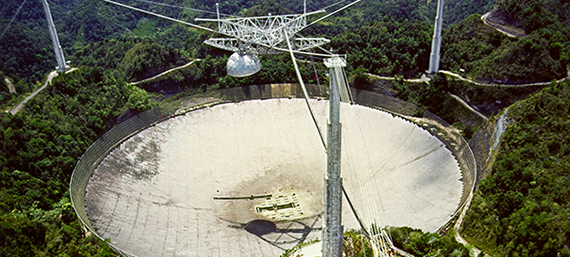
The Arecibo Observatory in Puerto Rico, where Dennis Wingo and his team established contact with the ISEE-3 satellite. Public domain image: Wikipedia.
In the first episode of the Solid Podcast, we talked with Dennis Wingo, founder of Skycorp, in the former NASA McDonald’s where he’s been restoring the first images of the moon taken from space.
After an hour of recounting his techno-archaeology exploits — reverse-engineering the arcane analog image-transmission systems that NASA’s engineers developed in the 1960s — Dennis paused and said, “and that’s just one of our history projects.”
That teaser is where we begin today’s episode. Ready to apply modern computing to another analog challenge, Dennis turned his attention to the reboot of the International Sun/Earth Explorer-3, a research satellite launched in 1978 and commended to the heavens in 1997.
NASA decommissioned the equipment for communicating with the satellite in 1999, so Dennis set about reverse-engineering the ISEE-3’s control system and devising a way to communicate with it. In the 1970s, he would have needed custom analog hardware, but now, general-purpose hardware is powerful enough that he could do it all with software. Read more…

Talking shop with Other Machine Company
The O'Reilly Solid Podcast: Danielle Applestone on running a machine tool startup and empowerment through desktop manufacturing.
Register for Solid 2015, where you can see Danielle Applestone’s session — How to make an Othermill: From milk jugs to your door — and much more.
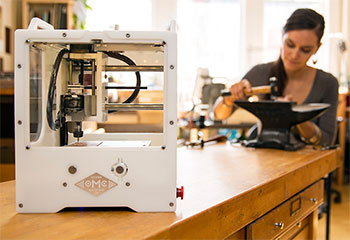
An Othermill. Photo: Other Machine Co.
Grown out of the Machines that Make project at MIT’s Center for Bits and Atoms and incubated at Saul Griffith’s Otherlab in San Francisco, Other Machine Company launched a successful Kickstarter to finance completion of the Othermill back in May of 2013.
For readers not familiar with this particular type of kit, I’ll go into a bit more detail: a CNC (Computer Numerical Control) mill is a machine tool that can be controlled by a computer to move some kind of rotary cutter (such as an endmill or drill bit) to remove material from a workpiece. This is a type of “subtractive manufacturing” process.
With all of the fuss around 3D printing (known in the industry as “additive manufacturing”) these days, I personally don’t think that CNC machining gets enough attention. Although 3D printing is certainly an exciting technology in its own right, it cannot currently compete with CNC machining in terms of cost, supported material types, and range of applications. Read more…

Solid Podcast: Trip to McMoon’s
Dennis Wingo on the Lunar Orbiter Image Recovery Project, the project's Indiegogo campaign, and Skycorp.
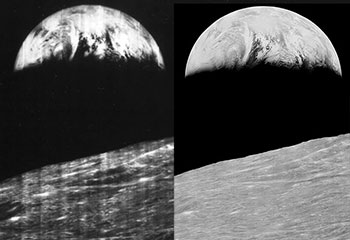
Before and after: The first “Earthrise” image, taken by the Lunar Orbiter 1 satellite and recovered by Dennis Wingo’s Lunar Orbiter Image Recovery Project. Credit: NASA/Skycorp Incorporated.
We’re kicking off our newest series, the O’Reilly Solid Podcast, with an episode recorded in the manager’s office of a McDonald’s at NASA’s Ames Research Center. David Cranor and I visited McMoon’s, as it’s known, to talk with Dennis Wingo, founder of two audacious “techno archaeology” efforts.
In the first episode, we discuss the Lunar Orbiter Image Recovery Project, which has rescued NASA’s first high-resolution images from satellites orbiting the moon. Dennis’ team reverse-engineered the extraordinary analog image transmission system that the satellites used in 1966 and 1967, digitized 14 tons of magnetic tape, and interpreted them to compose imagery at vastly higher resolution than NASA was originally able to recover from the satellites. Read more…
